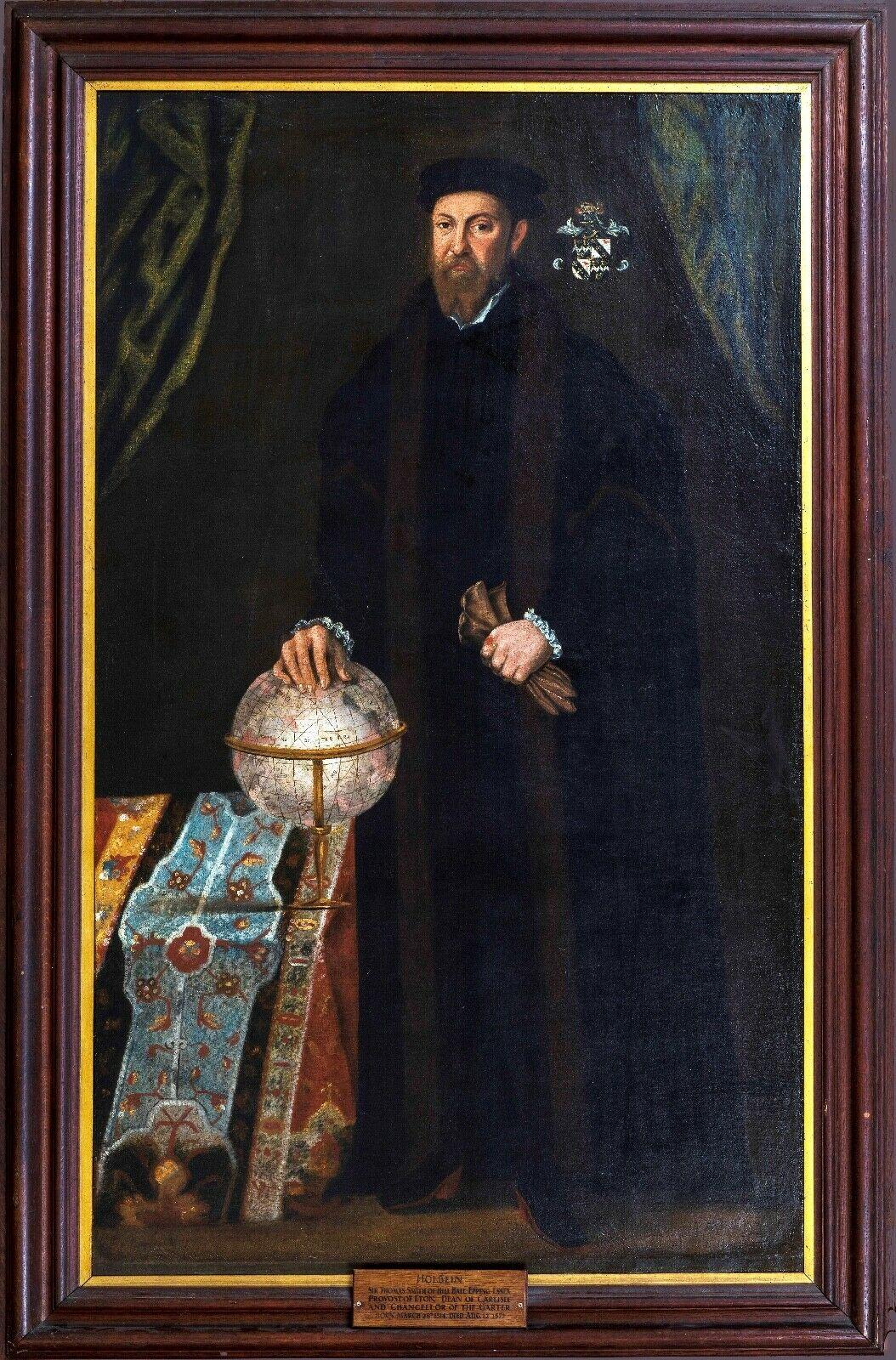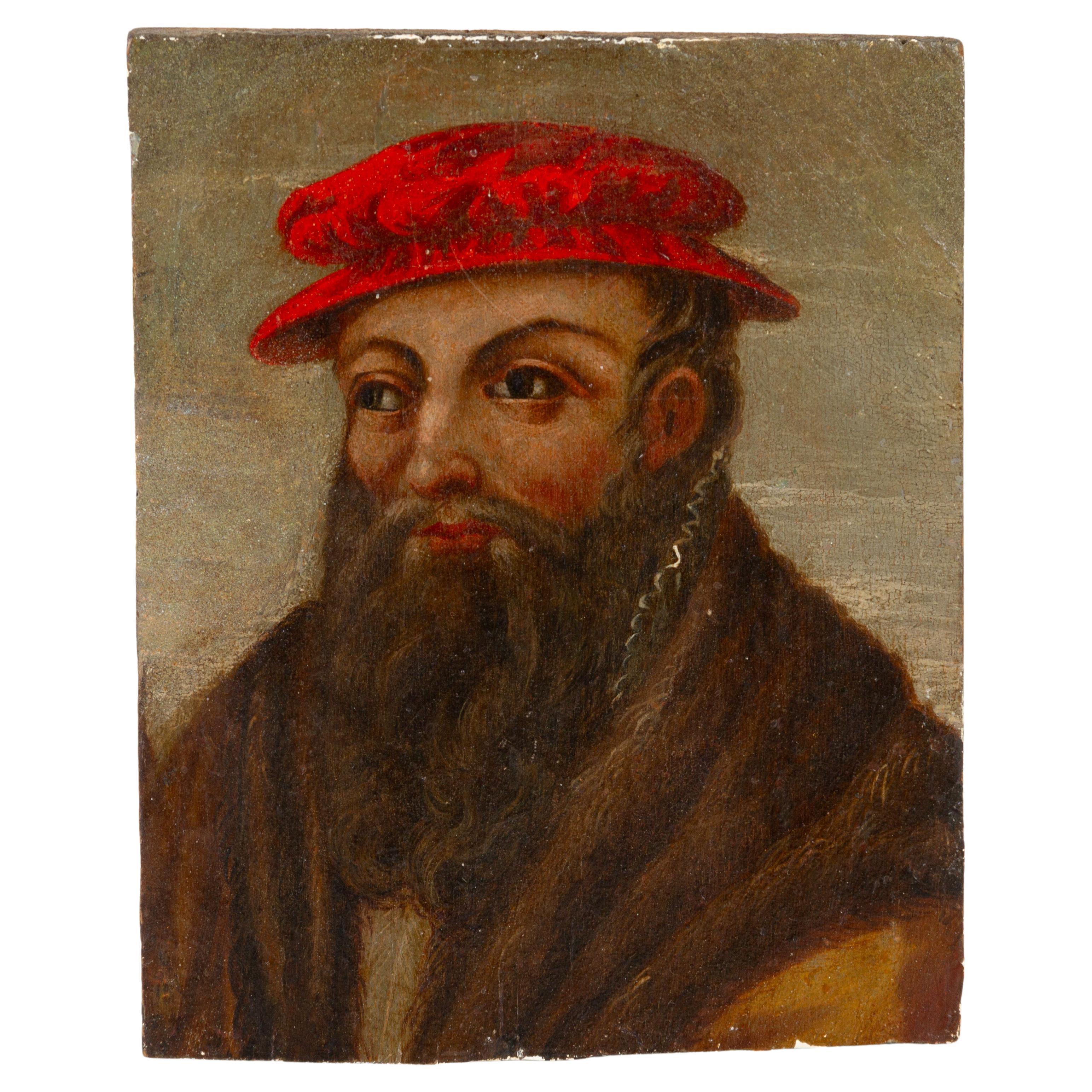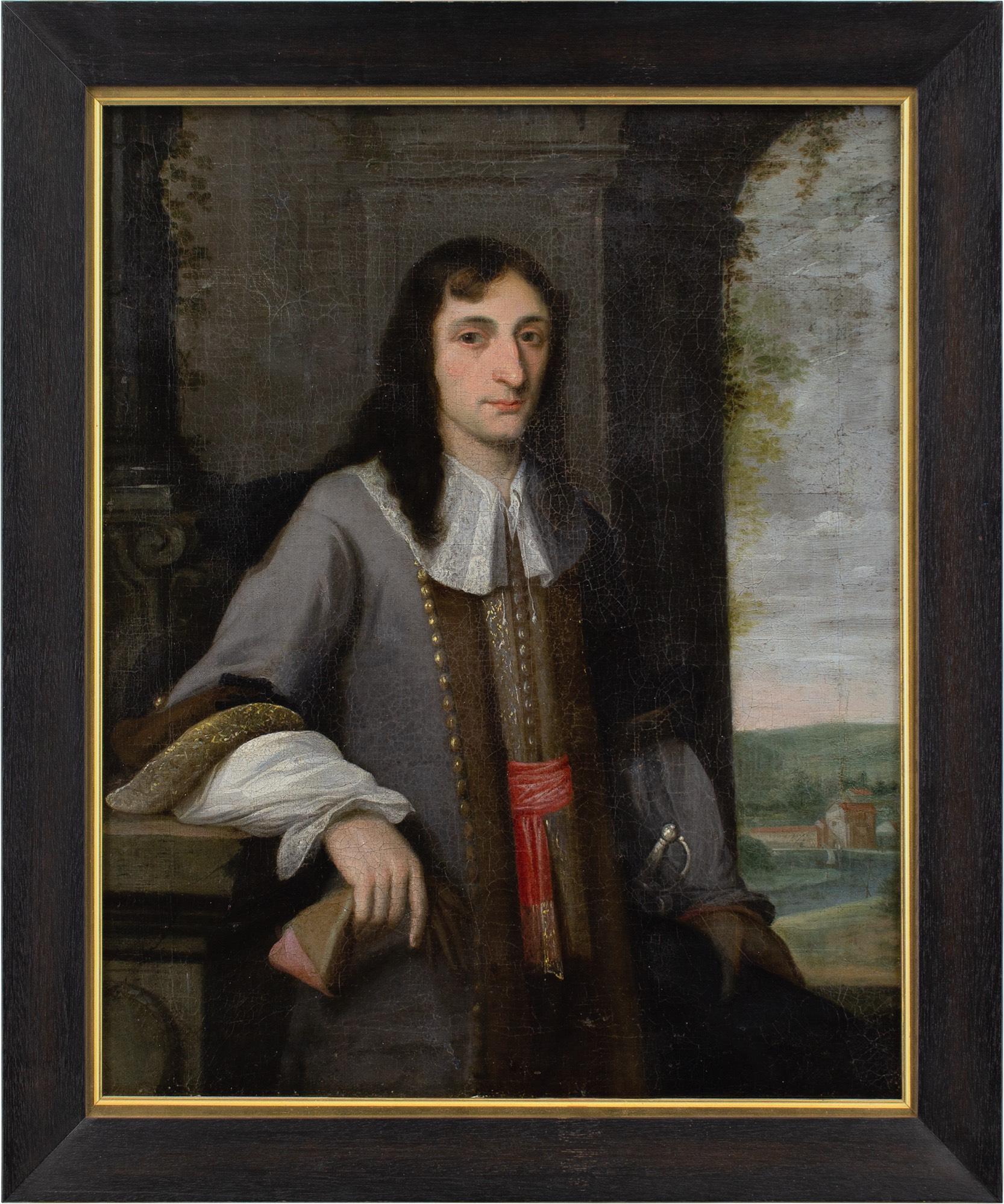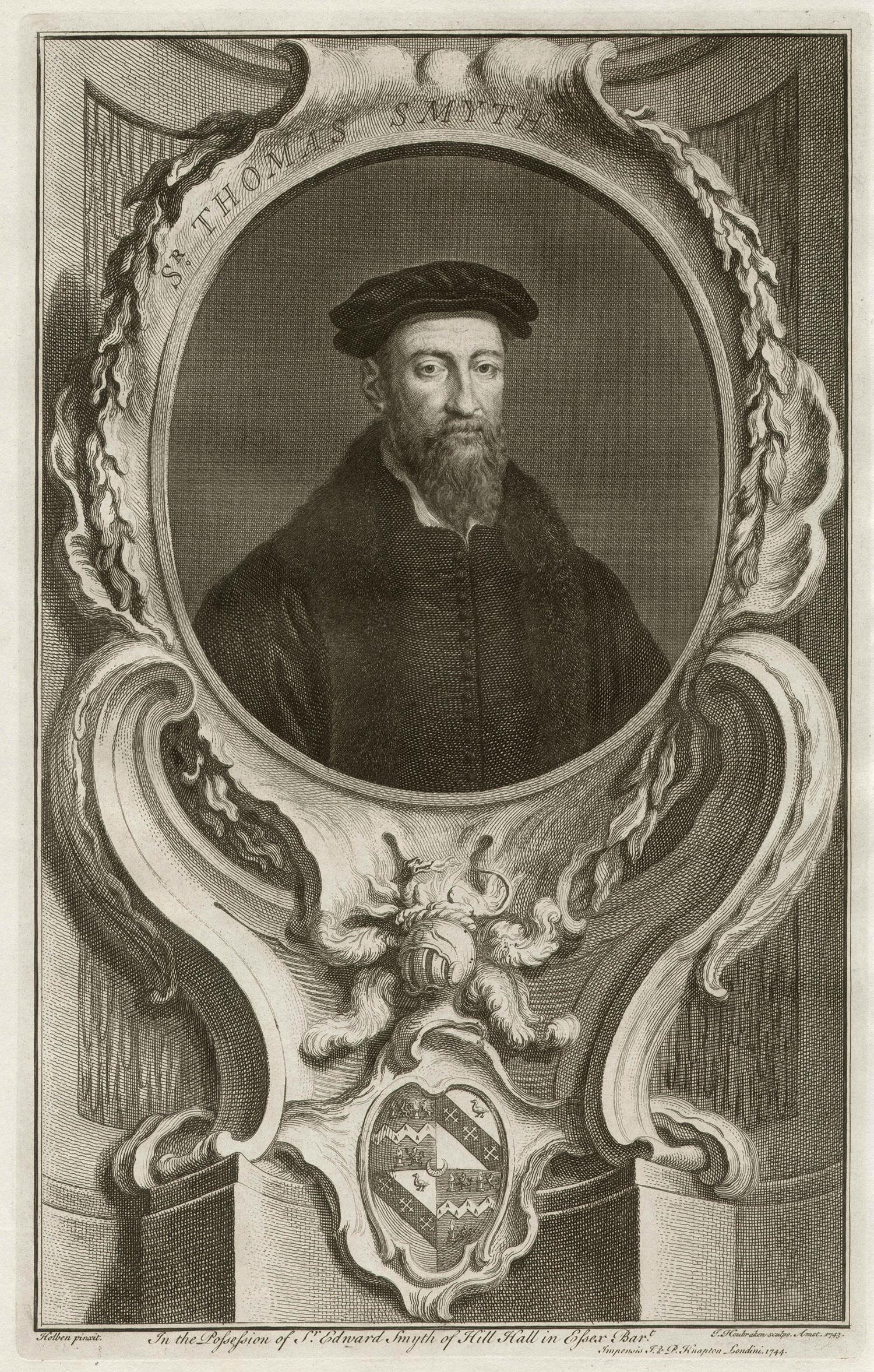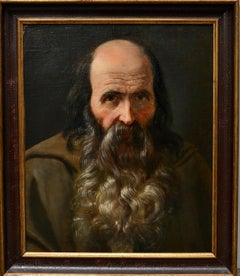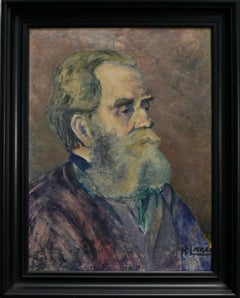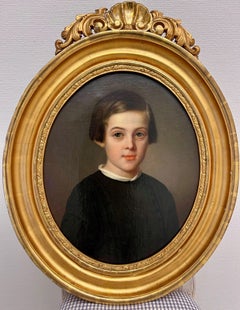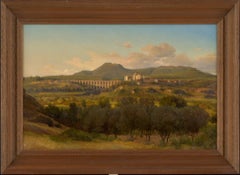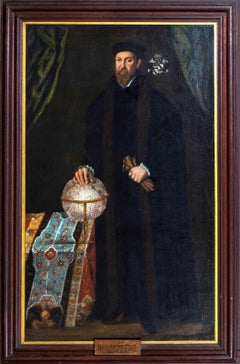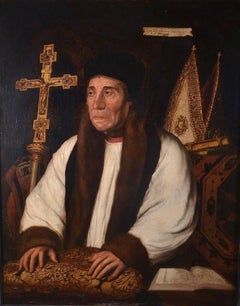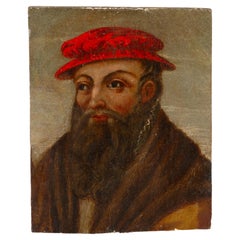Items Similar to 17th Century Portrait of Reverend and Reformer John Calvin
Want more images or videos?
Request additional images or videos from the seller
1 of 7
Unknown17th Century Portrait of Reverend and Reformer John Calvin
$2,507.96
£1,853.23
€2,100
CA$3,474.24
A$3,797.47
CHF 2,000.04
MX$46,693.59
NOK 24,994.96
SEK 23,515.32
DKK 15,991.35
About the Item
A Rare 17th-Century Portrait of John Calvin
This small interesting portrait, of John Calvin (1509–1564) offers a rare glimpse into the enduring legacy of the French-Swiss reformer. Painted by an anonymous artist, it dates back to the 17th century and bears the inscription "IOANNES CALVINVS" at the top. Portraits of Calvin, a pivotal figure in the Protestant Reformation and the founder of Calvinism, are exceedingly scarce. The present work exemplifies the classical depictions seen in other known portraits of him, making it an interesting piece for collectors and historians alike.
The portrait is painted within an oval frame set against a neutral background, originally off-white or light brown but now darkened due to varnish discoloration. Measuring 20 x 18cm (excluding the frame), it is executed on a rectangular oak wood panel. Despite its unrestored condition and the accumulation of surface dirt and varnish discoloration, the underlying painting remains in good condition, save for minor paint losses in the outer edges and some older retouching in select areas.
John Calvin: The Man Behind the Portrait
John Calvin, born Jean Cauvin in 1509 in Noyon, Picardy, France, was a towering figure of the Protestant Reformation. His teachings laid the foundation for the Calvinist doctrine, which significantly influenced religious movements in Switzerland, France, Germany, the Netherlands, and Scotland. Calvin’s ideas even reached England and the United States, shaping Protestant thought in ways that surpassed the influence of Martin Luther in some regions.
A scholar and theologian, Calvin initially pursued studies in theology and law before embracing humanistic studies. His theological journey began with a decisive break from Catholic doctrine, inspired by his studies of the Bible and Martin Luther’s writings. By 1533, Calvin openly championed evangelical beliefs, becoming a leader among reformers in Paris. However, persecution forced him to flee to Basel in 1534, where he penned his seminal work, Institutio Christianae Religionis (1536), a systematic presentation of Reformed theology.
Calvin’s tenure in Geneva marked his most significant contribution to the Reformation. After being expelled in 1538 due to his strict moral and ecclesiastical reforms, he returned in 1541 at the city’s request. There, he established a rigorous church order and founded the Academy of Geneva in 1559, which became a center for Reformed theology and education. Calvin’s legacy extended beyond his lifetime, profoundly shaping Protestant traditions worldwide.
Artistic and Historical Significance
This portrait captures Calvin’s intellectual gravitas and his role as a leading reformer during the 16th century. The 17th-century artist, though anonymous, adhered to the traditional iconography associated with Calvin, presenting him with a dignified and contemplative demeanor. Such works are rare not only because of their subject but also due to the limited production of portraits depicting Protestant reformers during a period dominated by Catholic art commissions.
From an art collector’s perspective, this painting offers a convergence of religious history, portraiture, and early modern craftsmanship. The unrestored condition provides an opportunity for careful conservation, preserving the authenticity and patina that reflect its age and journey through time. Its small size and intimate composition make it a compelling addition to any collection focused on Reformation history, early modern art, or theological figures.
This 17th-century portrait of John Calvin represents an artifact of Reformation history and a testament to the enduring impact of his theological legacy. Rare and historically interesting, it stands as both a work of art and a piece of cultural heritage.
- Dimensions:Height: 10.16 in (25.8 cm)Width: 9.06 in (23 cm)Depth: 1.19 in (3 cm)
- Medium:
- Movement & Style:
- Period:
- Condition:It is presently unrestored, surface is heavily discolored by dirt and discoloration of the varnish. In general good condition for the age, small paint losses in the outer areas of the painting and there are some areas of old retouching paint.
- Gallery Location:Stockholm, SE
- Reference Number:1stDibs: LU2608216686852
About the Seller
5.0
Platinum Seller
Premium sellers with a 4.7+ rating and 24-hour response times
1stDibs seller since 2023
27 sales on 1stDibs
Typical response time: <1 hour
- ShippingRetrieving quote...Shipping from: Stockholm, Sweden
- Return Policy
Authenticity Guarantee
In the unlikely event there’s an issue with an item’s authenticity, contact us within 1 year for a full refund. DetailsMoney-Back Guarantee
If your item is not as described, is damaged in transit, or does not arrive, contact us within 7 days for a full refund. Details24-Hour Cancellation
You have a 24-hour grace period in which to reconsider your purchase, with no questions asked.Vetted Professional Sellers
Our world-class sellers must adhere to strict standards for service and quality, maintaining the integrity of our listings.Price-Match Guarantee
If you find that a seller listed the same item for a lower price elsewhere, we’ll match it.Trusted Global Delivery
Our best-in-class carrier network provides specialized shipping options worldwide, including custom delivery.More From This Seller
View AllPortrait of a Russian Artist or Dignitary - 19th Century Oil on Canvas
Located in Stockholm, SE
This 19th-century oil on canvas portrait depicts a distinguished male figure—probably Russian and possibly an artist or a dignitary—with a striking resemblance to the renowned Russia...
Category
19th Century Portrait Paintings
Materials
Canvas, Oil
Colorful Portrait of Bearded Man - Oil on Cardboard 1940´s
Located in Stockholm, SE
The Portrait of a Bearded Man is an early work by Swedish artist Rune Kurt Haries Lagerbrink, who occasionally signed his works as "R. Lager." Painted in oil on cardboard. The old fr...
Category
1940s Other Art Style Portrait Paintings
Materials
Cardboard, Oil
Portrait of a Young Boy - Oil on Canvas Circa 1850
Located in Stockholm, SE
Oval Portrait of a Young Boy (Johan Gustaf Moll, 1843–1912), attributed to Carl Ferdinand Sohn (1805–1867)
An intimate oval portrait of a young boy. Mounted in an oval gilt wood peri...
Category
1850s Other Art Style Portrait Paintings
Materials
Canvas, Oil
Italian Landscape, Ariccia and The Alban Mountains - Oil on Paper 1850´s
Located in Stockholm, SE
View of the Ariccia Bridge and the Alban Hills
This finely executed plein air landscape depicts the monumental bridge of Ariccia and the town with the surrounding Alban Hills, painted by German landscape artist Joachim Ludwig Heinrich Daniel Bünsow (born 1821 in Kiel, died 1910 in the same city). Executed in oil on paper mounted on cardboard, the work dates from his Italian period between 1853 and 1858. Not signed.
Bünsow received his artistic training at the Royal Danish Academy of Fine Arts in Copenhagen from 1839 to 1848, studying under Johann Ludwig Lund and Christoffer Wilhelm Eckersberg. In 1844, the Copenhagen Art Association acquired his painting "Tellingstedt in Dithmarschen." Following his studies, he traveled to Dresden, where he became associated with the circle around Johan Christian Dahl. A scholarship from the Copenhagen Academy enabled Bünsow to reside in Rome from 1853 to 1858. During this period, his landscapes evolved from the finely toned, naturalistic style of his early work to more atmospheric and idealized compositions, influenced by Louis Gurlitt.
Bünsow's early works from his time in Copenhagen are characterized by fine tonality and naturalistic rendering, reflecting the style of his teacher Christoffer Wilhelm Eckersberg. His Italian landscapes, however, exhibit a more atmospheric and idealized approach, influenced by Louis Gurlitt. Notably, Bünsow produced high-quality drawings during his time in Rome, some of which are preserved in the Kunsthalle zu Kiel.
Historical Context: The Ariccia Bridge
In the early 19th century, the local authorities sought to improve the Appian Way's safety and accessibility. The solution involved constructing bridges to span the Ariccia valley and adjacent ravines. In 1843, Pope Gregory XVI commissioned a six-arched bridge to address the elevation differences. Following his death in 1846, Pope Pius IX continued the project, entrusting architect Ireneo Aleandri with the design and Giuseppe Bertolini with the execution.
Completed in 1854, the bridge stands as a significant 19th-century engineering achievement. Featuring three tiers of elegant neoclassical arches inspired by Roman art, it measures 59 meters in height and 312 meters in length. Travertine columns at both ends commemorate the Roman milestones...
Category
1850s Other Art Style Landscape Paintings
Materials
Paper, Oil, Cardboard
Profile Portrait of a Boy - 19th Century Oil on Canvas
Located in Stockholm, SE
The painting titled Portrait of a Boy in Profile, attributed to Friedrich Wasmann (1805–1886), exemplifies the refined portraiture characteristic of the Biedermeier period. Executed ...
Category
Mid-19th Century Other Art Style Portrait Paintings
Materials
Canvas, Oil, Cardboard
$2,783 Sale Price
38% Off
Free Shipping
Italian School 17th Century Drawing of Putti
Located in Stockholm, SE
A fine small Italian 17th/18th century sepia ink study of 6 putti in different positions. Paper mounted on paper. A tergo written "Scuola Lombarda".
A putto/putti are figure in a wo...
Category
17th Century Italian School Figurative Drawings and Watercolors
Materials
Ink
You May Also Like
Portrait Of Thomas Smythe (1514-1577) School of Hans HOLBEIN (1497-1543)
By Hans Holbein
Located in Blackwater, GB
Portrait Of Thomas Smythe (1514-1577), 16th Century
School of Hans HOLBEIN (1497-1543)
Fine huge 16th Century English Old Master portrait of Sir Thomas...
Category
16th Century Old Masters Portrait Paintings
Materials
Oil
PORTRAIT OF WILLIAM WARHAM, Old Masters Oil on Wood
Located in London, GB
after HANS HOLBEIN THE YOUNGER
1497 – 1543
PORTRAIT OF WILLIAM WARHAM
Oil on canvas
Image size: 38 x 35 inches (89 x 71 cm)
Hand made period style frame
The handling of the paint in...
Category
18th Century and Earlier Old Masters Portrait Paintings
Materials
Canvas, Oil
17th Century Old Master Bearded Man Portrait Oil Painting on Panel
Located in Nottingham, GB
In good condition
From a private collection
Free international shipping
17th Century Old Master Bearded Man Portrait Oil Painting on Panel
Category
Antique 17th Century Paintings
Materials
Wood, Paint
Portrait Noble Man Ceresa Paint Oil on canvas Old master 17th Century Italy Art
Located in Riva del Garda, IT
Carlo Ceresa (San Giovanni Bianco 1609 - Bergamo 1679) attributable
Full-length portrait of Giacomo Pesenti
Oil on canvas (206 x 121 cm - in frame 212 x 133 cm.)
This fascinating portrait, portraying a full-length gentleman and datable to the 17th century, illustrates the stylistic and compositional details typical of the pictorial production of the Lombardy area, Bergamo in particular. This reference is reflected in elements such as the natural light, the sober and austere setting and, above all, the subtle psychological characterisation of the face.
We are inclined to identify the hand of portrait painter Carlo Ceresa, one of the most illustrious Bergamasque figure painters of the 17th century, capable of developing a style of intense realism and acute psychological investigation. In his works, and our portrait perfectly reflects his canons, an extraordinary naturalistic imprint, great realism and remarkable essentiality are evident.
Those traits of severity, moral rigour and austerity typical of his portraiture find a perfect balance here: never courtly or rhetorical, his portraits are profoundly linked to the concept of counter-reform. Immortalising the main personalities of the time, he established himself as a point of reference for the Bergamasque aristocracy, from the Vertova to the Pesenti to the Secco Suardo.
The subject of the portrait is Giacomo Pesenti, here immortalised life-size in a rigorous black suit, his left hand resting on a table, on which is placed the necessities for writing and a manuscript, and his right hand, with a sealed ring on his little finger, abandoned along his side while he holds his gloves.
He wears a suit of incredible rigour, dressed as befits a man of his high social standing, while the sharp light focuses on his face, with an intensity that seems to be accentuated by the reflection of the white collar, with its sharp profile.
For Ceresa, it is not the richness of the garment that gives value to the person portrayed, it is the need to give feeling and bring out the character of the person, and this he succeeds in marvellously, aided by his ability to capture the essence of the person and return it to us in painting through the face and light used as a strong expressive element.
In fact, the image highlights that 'counter-reformed' composure typical of the portraiture of painters active in this area and era, adhering to a verism...
Category
17th Century Old Masters Paintings
Materials
Oil
$12,229 Sale Price
20% Off
17th-Century Flemish School, Portrait Of A Gentleman In A Justaucorps
Located in Cheltenham, GB
This fine late 17th-century Flemish portrait depicts a distinguished gentleman wearing a justaucorps, black cloak, white shirt, vest, leather gloves, and breeches. He’s carrying a wi...
Category
1670s Old Masters Portrait Paintings
Materials
Oil, Canvas
Sir Thomas Smyth, portrait engraving, c1820
By Jacobus Houbraken 1
Located in Melbourne, Victoria
Copper-line engraving by Jacobus Houbraken (1698-1780) after Holbein.
Houbraken was a Dutch engraver famous for his series of portraits of famous English historical figures with elaborate cartouches.
Originally published 1739, this impression c1820.
360mm by 230mm (platemark)
Sir Thomas Smythe...
Category
Early 19th Century Renaissance Portrait Prints
Materials
Engraving
